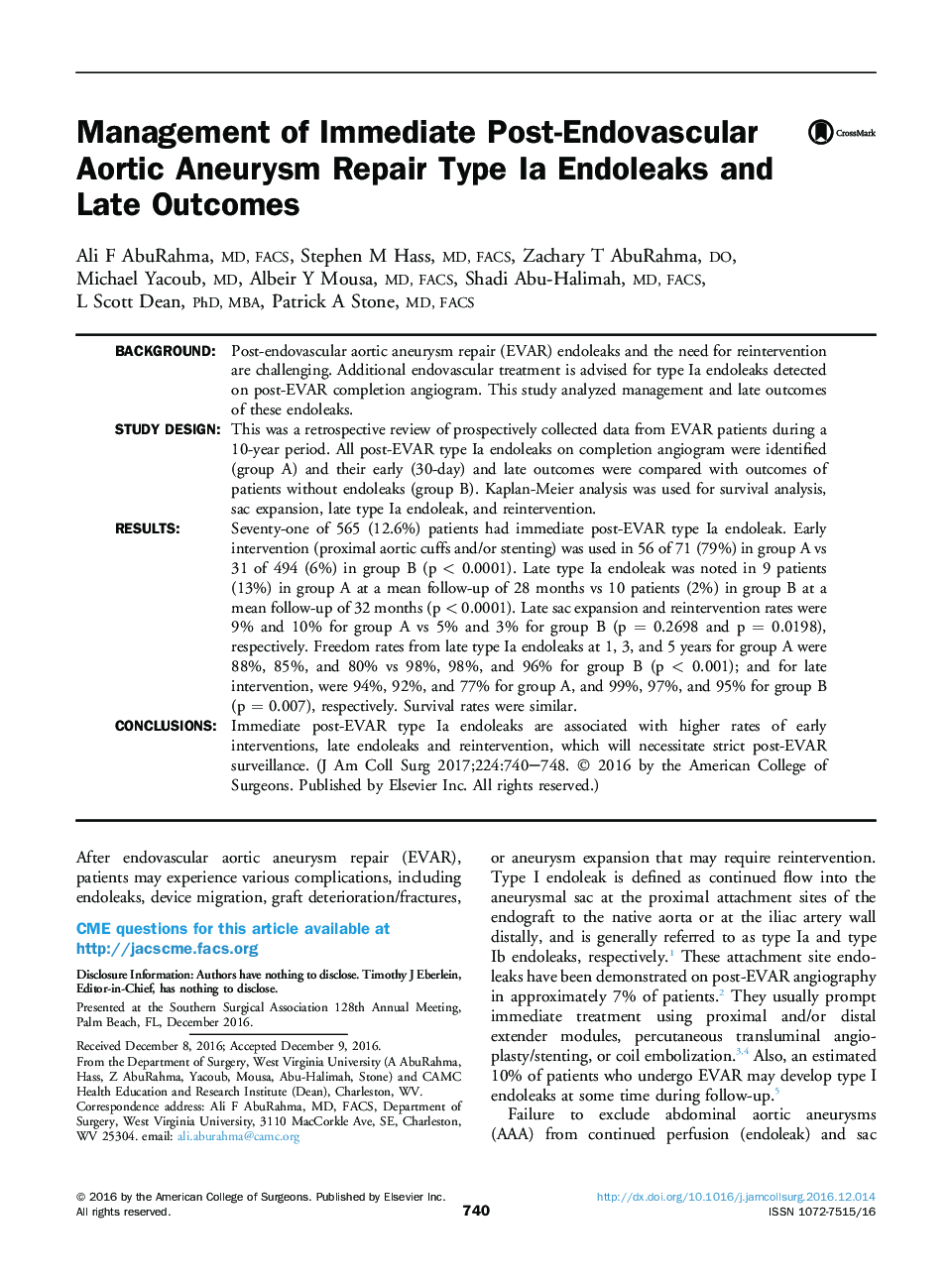| Article ID | Journal | Published Year | Pages | File Type |
|---|---|---|---|---|
| 5733127 | Journal of the American College of Surgeons | 2017 | 9 Pages |
BackgroundPost-endovascular aortic aneurysm repair (EVAR) endoleaks and the need for reintervention are challenging. Additional endovascular treatment is advised for type Ia endoleaks detected on post-EVAR completion angiogram. This study analyzed management and late outcomes of these endoleaks.Study DesignThis was a retrospective review of prospectively collected data from EVAR patients during a 10-year period. All post-EVAR type Ia endoleaks on completion angiogram were identified (group A) and their early (30-day) and late outcomes were compared with outcomes of patients without endoleaks (group B). Kaplan-Meier analysis was used for survival analysis, sac expansion, late type Ia endoleak, and reintervention.ResultsSeventy-one of 565 (12.6%) patients had immediate post-EVAR type Ia endoleak. Early intervention (proximal aortic cuffs and/or stenting) was used in 56 of 71 (79%) in group A vs 31 of 494 (6%) in group B (p < 0.0001). Late type Ia endoleak was noted in 9 patients (13%) in group A at a mean follow-up of 28 months vs 10 patients (2%) in group B at a mean follow-up of 32 months (p < 0.0001). Late sac expansion and reintervention rates were 9% and 10% for group A vs 5% and 3% for group B (p = 0.2698 and p = 0.0198), respectively. Freedom rates from late type Ia endoleaks at 1, 3, and 5 years for group A were 88%, 85%, and 80% vs 98%, 98%, and 96% for group B (p < 0.001); and for late intervention, were 94%, 92%, and 77% for group A, and 99%, 97%, and 95% for group B (p = 0.007), respectively. Survival rates were similar.ConclusionsImmediate post-EVAR type Ia endoleaks are associated with higher rates of early interventions, late endoleaks and reintervention, which will necessitate strict post-EVAR surveillance.
